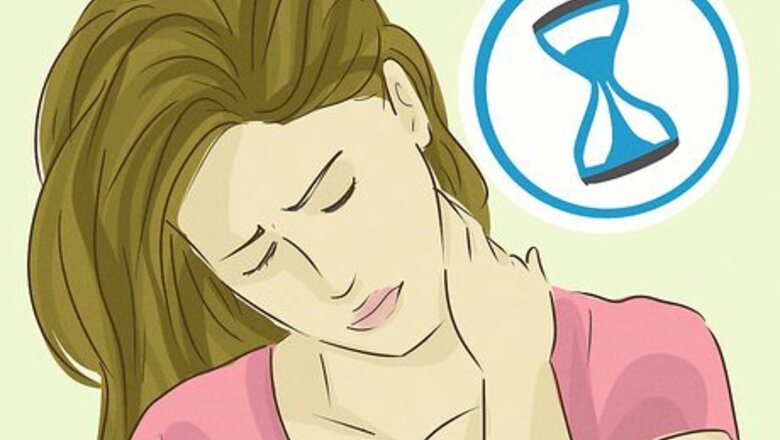
views
Dealing With a Pinched Nerve at Home
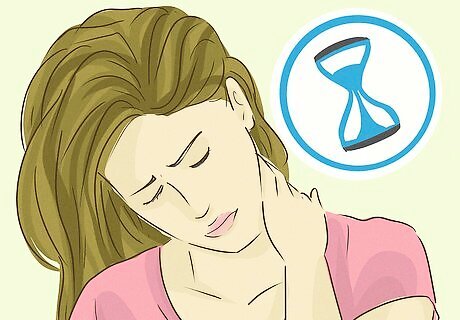
Wait and be patient. Pinched nerves in the cervical spine, most commonly called nerve root compression, usually occur suddenly and are related to awkward neck movements or trauma such as a whiplash-type injury. If caused by an unusual movement, the neck pain may gradually disappear on its own, without any treatment whatsoever. Depending on the cause of your problem, it will likely take anywhere from a few weeks to a few months for the pain to improve, and it may never completely go away. If your pain goes away quickly, it was likely a facet problem, rather than a pinched nerve. Continuing with normal neck movements, as long as they're not painful, won't interfere with the healing process, and it may prevent other problems down the road. EXPERT TIP Steve Horney PT, MPT, MTC, CSCS Steve Horney PT, MPT, MTC, CSCS Licensed Physical Therapist Steve Horney is a Licensed Physical Therapist and the Owner of Integrated Health Sciences, a New York City-based company that provides continuing education, health care products, and manual and movement physical therapy. Steve has over 15 years of academic and professional physical therapy training and specializes in the assessment and treatment of athletes with the goal of helping them become pain-free and less susceptible to injury. Steve is also a certified strength and conditioning specialist (CSCS) from the National Strength and Conditioning Association (NSCA). He received a BS in Health Science from Quinnipiac University in 2004 and a Masters of Physical Therapy (MPT) from Quinnipiac University in 2006. He then completed his Manual Therapy Certification (MTC) from the University of St. Augustine in 2014. Steve Horney PT, MPT, MTC, CSCS Steve Horney PT, MPT, MTC, CSCS Licensed Physical Therapist Our Expert Agrees: A pinched nerve can only heal through time. Changing the patterns that created the problem is a must so be aware of the positions that help and hurt your neck. A change in your sleeping, sitting, and in a working position may be in order.
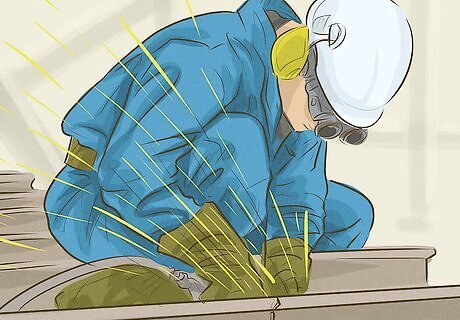
Alter your work or exercise routine. If your neck problem is caused by conditions at your job, then talk to your boss about switching to a different activity or altering your work station so your neck doesn't suffer more abuse. Blue collar jobs such as welding and construction have relatively high incidence of neck pain, but so can office jobs if the neck is constantly in a twisted or flexed position. If the neck pain is exercise related, then you may be working out too aggressively or with bad form — consult with a personal trainer. Complete inactivity (such as bed rest) is not recommended for neck pain — muscles and joints need to move and get ample blood supply in order to heal. Practice better posture at work and at home. Make sure your computer monitor is at eye level, which will help prevent neck strain/sprain. Examine your sleeping conditions. When you're laying down, imagine an X-ray of your neck and spine. You want your neck to be in a neutral position, so you don't want your ear too close to one shoulder or the other. Avoid using pillows that are too thick, which may contribute to neck issues. Also, avoid sleeping on your stomach as it can cause the head and neck to twist in aggravating ways.

Take over-the-counter medications. Non-steroidal anti-inflammatories (NSAIDs) such as ibuprofen, naproxen or aspirin can be short-term solutions to help you deal with pain or inflammation in your neck. Keep in mind that these medications can be hard on your stomach, kidneys and liver, so it's best not to use them for more than two weeks at a stretch. Never take more than the suggested dosage. Dosage for adults is usually 200-400 mg, by mouth, every four to six hours. Alternatively, you can try over-the-counter analgesics such as acetaminophen (Tylenol) or muscle relaxants (such as cyclobenzaprine) for your neck pain, but never take them concurrently with NSAIDs. Be careful not to take any medications on an empty stomach, as they can irritate the lining of your stomach and increase the risk of ulcers.
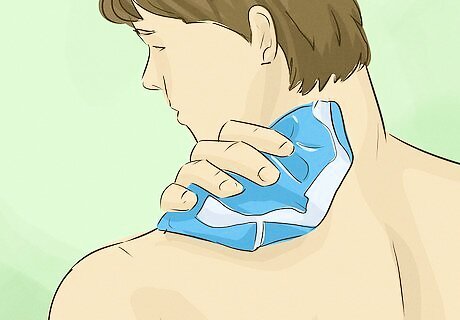
Apply cold therapy. The application of ice is an effective treatment for pain in essentially all minor musculoskeletal injuries, including neck pain. Cold therapy should be applied to the most tender part of your neck in order to reduce the swelling and pain. Ice should be applied for 15-20 minutes every two to three hours for a couple of days, then reduce the frequency as the pain and swelling subside. Compressing the ice against your neck with a wrap-around elastic support will also help control the inflammation. Always wrap ice or frozen gel packs in a thin towel in order to prevent frostbite on your skin.
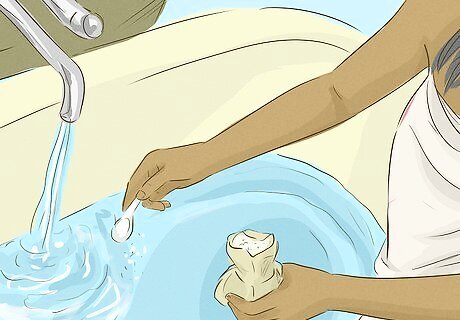
Consider an Epsom salt bath. Soaking your upper back and neck in a warm Epsom salt bath can significantly reduce pain, especially if the pain is caused by muscle strain. The magnesium in the salt helps muscles relax. Don't make your bath too hot (to prevent scalding) and don't soak in the bath for much more than 30 minutes because the salty water will pull fluid from your body and potentially dehydrate you. If swelling is a particular problem in your neck, then follow-up the warm salt bath with cold therapy until your neck feels numb (about 15 minutes or so).

Try gently stretching your neck if your symptoms have eased. Stretching your neck might help you feel a little better if your neck still feels tight after some of the pain has started to ease. Use slow, steady movements and take deep breaths during your stretches. In general, hold stretches for about 30 seconds and repeat three to five times daily. While standing and looking straight ahead, slowly laterally flex your neck, bringing your ear gently towards your shoulder. After a few seconds of rest, then stretch the other side. Stretching directly after a warm shower or the application of moist heat is recommended because your neck muscles will be more pliable. If you have an inflamed facet joint, stretching will probably be painful and could aggravate your condition, so stop right away if the stretch hurts.
Seeking Medical Help
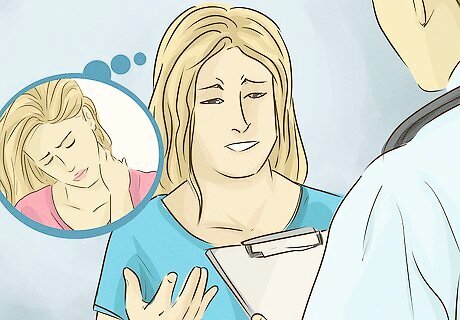
See a medical specialist. Medical specialists such as an orthopedist, neurologist or rheumatologist may be needed to rule out the most serious causes of your neck pain, such as herniated disc, infection (osteomyelitis), osteoporosis, spinal fracture, rheumatoid arthritis or cancer. These conditions are not common causes of neck pain, but if home care and conservative therapies are not effective, then more serious problems need to be considered. X-rays, bone scans, MRI, CT scan and nerve conductance studies are modalities that specialists may use to help diagnose your neck pain. Your doctor may also send you for a blood test to rule out rheumatoid arthritis or a spinal infection such as meningitis. Sometimes, compressed nerves don't have any symptoms. If you have to have an MRI for another reason, for instance, you may be surprised to learn that you have compression to your nerves, even if you haven't experienced any pain.
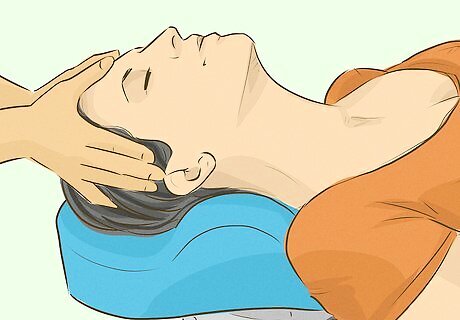
Talk to your doctor or physical therapist about traction. Traction is a technique to open the spaces between your vertebrae. Traction can come in many forms, from a therapist using his hands to manually traction your neck, to a traction table. There are also homemade traction devices. Always remember to traction the neck slowly. If there is any pain or numbness radiating into the arms, stop right away and see a doctor. Before using a home made traction device, it’s best to seek the advice of your physician, chiropractor, or physical therapist so he can help you pick the right one.

Consider a facet joint injection. Your neck pain may be caused by chronic joint inflammation. A facet joint injection involves real-time fluoroscopic (X-ray) guidance of a needle through the neck muscles and into the inflamed or irritated spinal joint, followed by a release of an anesthetic and corticosteroid mixture, which quickly relieves both pain and inflammation at the site. Facet joint injections take 20 – 30 minutes to do and the results can last from a few weeks to a few months. Facet joint injections are limited to three within a six-month time frame. The pain relief benefits from facet joint injections typically begin on the second or third day post treatment. Until that time frame, your neck pain may get a little worse. Potential complications of facet joint injections include infection, bleeding, local muscle atrophy and nerve irritation / damage.
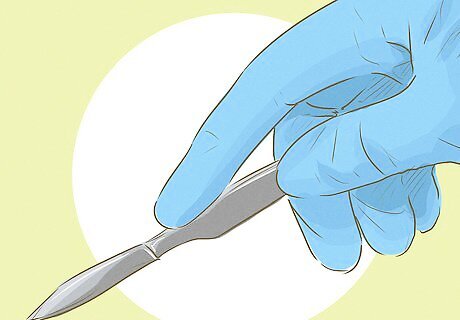
Consider surgery. Surgery for neck pain is the last resort and should only be considered after all other conservative therapies are proven ineffective and if the cause warrants such an invasive procedure. Remember that if the nerves in your neck are truly involved, you'll also notice shooting pains, numbness, and weakness or wasting in your arms and hands. Reasons for neck surgery may include to repair or stabilize a fracture (from trauma or osteoporosis), to remove a tumor, or repair a herniated disc. Spinal surgery may involve the use of metal rods, pins or other devices for structural support. Stenosis is a condition where there's narrowing of either the holes where the nerve exits the spine, or the canal where the spinal cord runs off. Dealing with a herniated disc for stenosis may involve fusing two or more bones (vertebrae) together, which usually reduces range of motion. Possible complications from back surgery include local infection, allergic reaction to anesthesia, nerve damage, paralysis and chronic swelling / pain. Because there's a risk of complications from surgery, talk to your doctor about alternative therapies that might improve your condition, first.
Using Alternative Therapies
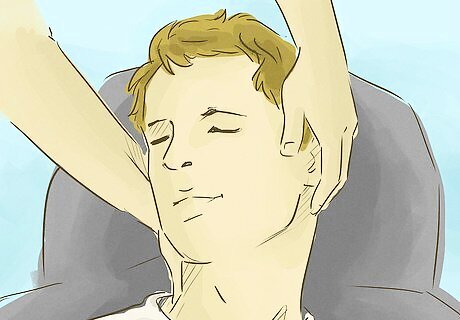
Get a neck massage. A strained muscle occurs when individual muscle fibers are taken beyond their tensile limits and subsequently tear, which leads to pain, inflammation and some degree of guarding (muscle spasm in attempts to prevent further damage). As such, what you're calling a "pinched nerve" might actually be a strained neck muscle. A deep tissue massage is helpful for mild-to-moderate strains because it reduces muscle spasm, combats inflammation and promotes relaxation. Start with a 30 minute massage, focusing on your neck and upper back areas. Allow the therapist to go as deep as you can tolerate without wincing. Always drink lots of water immediately following a massage in order to flush out inflammatory by-products, lactic acid and toxins from your body. Failure to do so might cause a headache or mild nausea. As an alternative to professional massage therapy, use a tennis ball or vibratory device on your neck muscles — or better yet, ask a friend to do it. Roll the ball slowly around the neck tenderness for 10-15 minutes a few times daily until the pain subsides.
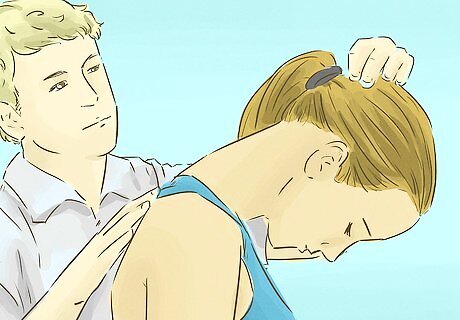
Try physiotherapy (physical therapy). If your neck problem is recurring (chronic) and caused by weak muscles, poor posture or degenerative conditions such as osteoarthritis, then you need to consider some form of rehabilitation. A physical therapist can show you specific and tailored stretches and strengthening exercises for your neck. Physiotherapy is usually required 2-3x per week for 4-6 weeks to positively impact chronic spinal problems. If need be, a physical therapist can treat your sore neck muscles with electrotherapy such as therapeutic ultrasound or electronic muscle stimulation. Good exercises for your neck include swimming, certain yoga positions and weight training, but make sure your injury is resolved first. A quality physical therapist will assess the lack of range of motion and strength in places other than just your neck, including your middle back, shoulders, and core. Then, they'll build a custom, tailored, corrective exercise program for you.
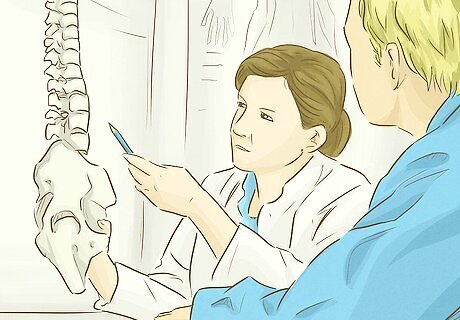
See a chiropractor or osteopath. Chiropractors and osteopaths are spinal specialists that focus on establishing normal motion and function of the small spinal joints that connect the vertebrae, called facet joints. Manual joint manipulation, also called an adjustment, can be used to unjam or reposition cervical facet joints that are slightly misaligned, which triggers inflammation and sharp pain, particularly with movement. Traction of your neck may also help relieve your pain. Although a single spinal adjustment can sometimes completely relieve your pinched nerve, more than likely it will take 3-5 treatments to notice significant results. Chiropractors and osteopaths also use a variety of therapies tailored more towards muscle strains, which may be more appropriate for your neck issue.
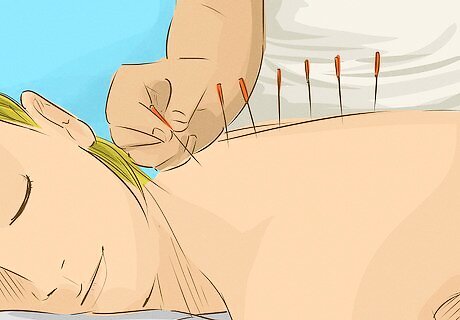
Consider acupuncture. Acupuncture involves sticking very thin needles into specific energy points within the skin / muscle in efforts to reduce pain and inflammation. Acupuncture for neck pain can be effective, especially if it's done when the symptoms first occur. Based on the principles of traditional Chinese medicine, acupuncture works by releasing a variety of substances including endorphins and serotonin, which act to reduce pain. It's also claimed that acupuncture stimulates the flow of energy, referred to as chi. Acupuncture is practiced by a variety of health professionals including some physicians, chiropractors, naturopaths, physical therapists and massage therapists.




















Comments
0 comment